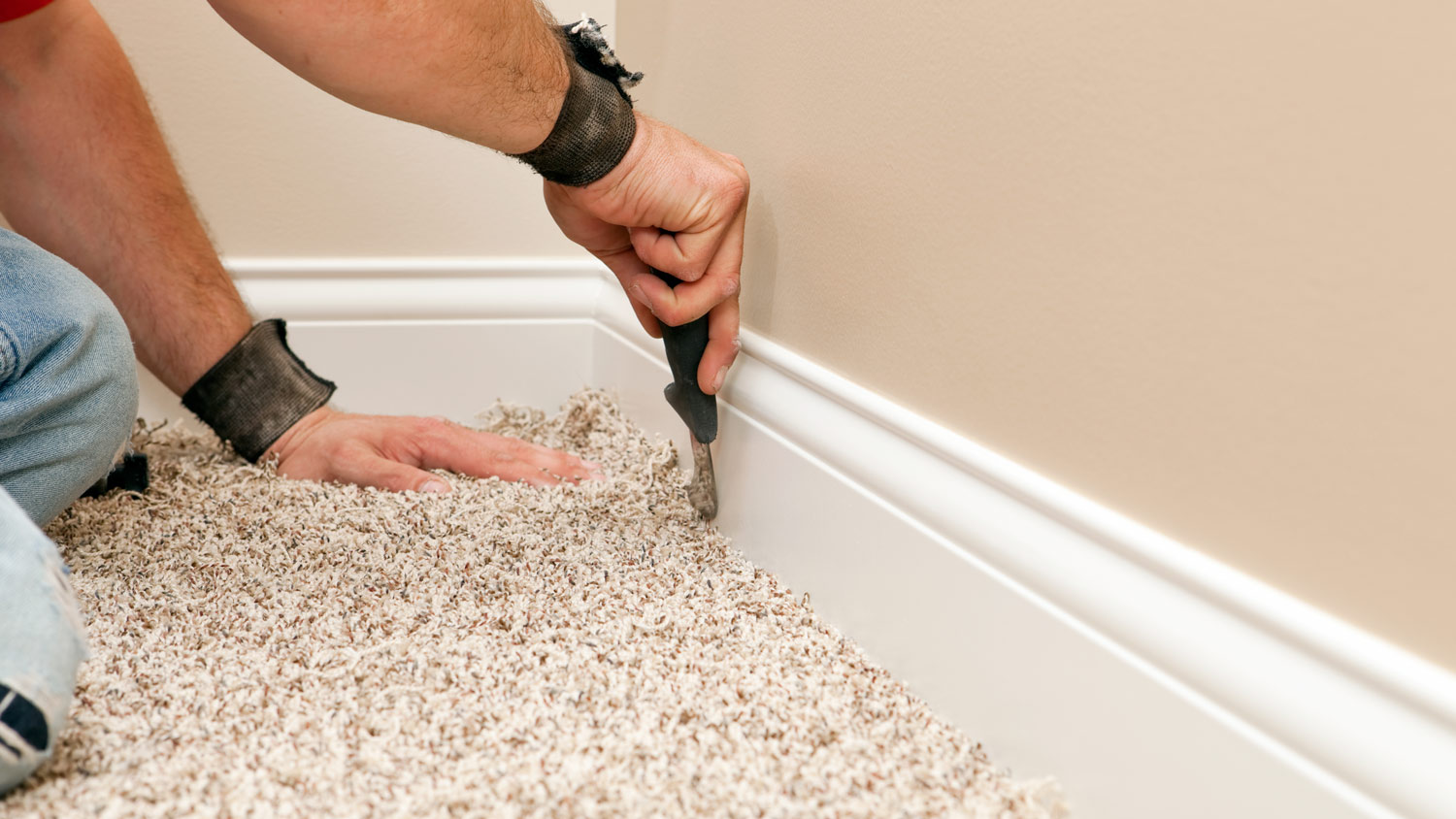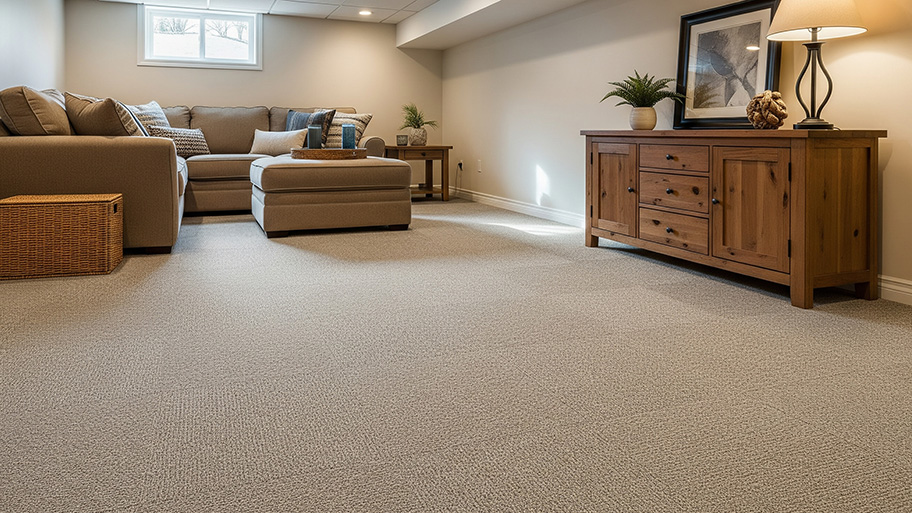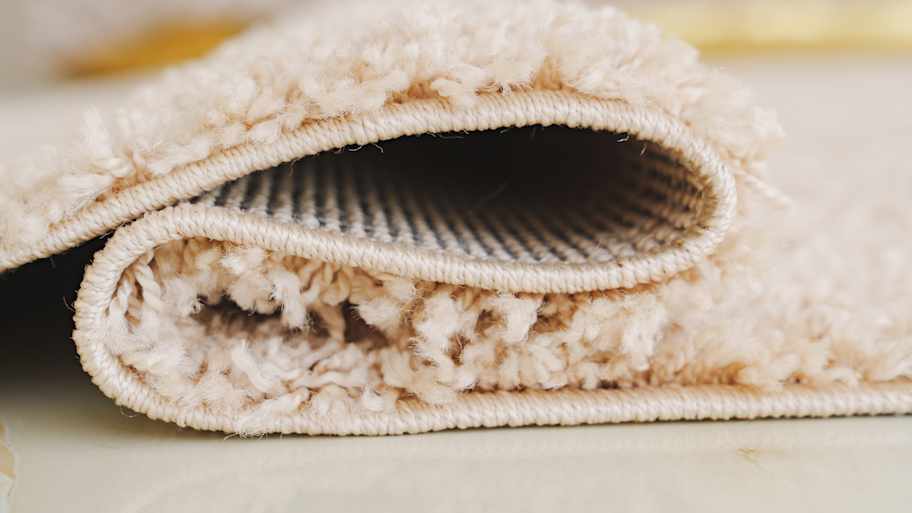
Get a clear estimate for carpet repair cost. Learn what impacts pricing, compare repair types, and find ways to save on your next carpet project.
Don’t let this easy DIY project floor you


There’s nothing quite like a freshly carpeted room. But traditional carpets can be tricky to install—not to mention expensive. Carpet tiles are a DIY-friendly option ideal for homeowners who want to replace their flooring on a budget. This guide will teach you how to install carpet tiles so you can say goodbye to your old dingy flooring without breaking the bank.
Before starting the project, remove any furniture from the room so you have a blank canvas. Then, remove the old flooring if necessary. Carpet tiles can be installed over certain types of flooring, including ceramic tile, vinyl, and hardwood. However, installing carpet tiles directly on the subfloor ensures the adhesive will bond and the tiles won’t slip or come loose once installed. Installing carpet tiles on the existing floor also means you might be able to see or feel the grout lines of the underlying floor after the tiles are installed.
If you have carpet (or decide to remove the vinyl or hardwood before installing carpet tiles), you may need to use a pry bar and floor scraper. If the floor has been installed using adhesive, it can be particularly difficult to remove—in this case, it might be best to leave removal to a pro. Carpet removal costs between $120 and $720.
Installing carpet tiles is a DIY-friendly project. Follow these seven steps to refresh your room from the floor up.

A smooth, even subfloor ensures your carpet tile will lay flat once installed. Before laying the carpet tiles, check the subfloor for cracks, dips, or dents and fill them in with putty (or add floor leveler using a trowel). Sand the floor lightly if you notice any splinters or rough spots. If the subfloor has extensive damage, you might need to replace it first. Replacing subflooring costs between $900 and $3,000, or an average of $1,560.
Once the subfloor is smooth, clean it thoroughly using a vacuum cleaner or broom and dispose of any debris. Mop the floor using warm water to ensure it’s clean, then allow the floor to dry thoroughly. Failure to clean the floor could result in the tile adhesive not sticking properly.
Finally, seal the subfloor to prevent damage from any spills. Use the proper sealant for the subfloor material, and apply it using a paint roller and metal tray, wearing a respirator to protect your lungs from the chemicals. You may need to add a couple of coats to ensure the floor is sealed correctly. Let the sealant dry thoroughly, which takes about an hour.
Measure the room and find the center, then divide the room into four quadrants. Mark the center and each quadrant with chalk so the lines intersect in the room’s center. Use a T-square tool to check that the center lines intersect at a 90-degree angle. Doing this lets you start the installation from the center of the room for an even finish.

Once you’ve divided the room into quadrants, start laying the carpet tile from the center, moving out toward the wall along the quadrant lines. If your tiles are patterned, check that the layout looks good before installing them permanently. Adjust the center point as needed until you’re happy with how the design looks in the room.

The next step is to install the tiles using adhesive. Just like when you dry-fit the tiles, start in the center of the room and install the tiles outward toward the walls. Apply adhesive to one quadrant of the subfloor, or remove the backing sheets if using peel-and-stick carpet tiles. Press the tile onto the subfloor firmly, then repeat the process with the next tile along the quadrant line.
Once the first row of tiles is installed, start the second row, butting each tile against the first row to prevent gaps. Continue installing until the first quadrant is complete, then install the tiles in the three remaining quadrants.
When you reach the room's edges, you may need to trim the carpet tiles to ensure a snug fit. Mark the backside of the tile with chalk to show where the tile starts to overlap with the one it’ll butt up against. Cut the tile using a carpet knife or utility knife against a straight edge to ensure a clean cut. Install the tile with the factory edge against its neighbor, slotting the cut edge against the wall to hide imperfections.
If you have any cabinets, pipes, or notches in the room, use your knife to cut the carpet to fit around these obstacles before installing.
Once all the tiles are installed, grab your carpet roller and roll it across the surface, starting at the center of the room and working outwards toward the walls. Roll the carpet in overlapping lines until you’ve rolled the entire room. This ensures the tiles are firmly stuck to the subfloor and can push out any pockets of trapped air underneath them.
The last step is to reinstall any baseboards you removed before installation and vacuum the carpet to remove any remaining dust or debris. Once you’re confident with the installation, move the furniture back into the room and enjoy your brand-new carpet!
Carpet tile installation is a doable project for most DIYers, even those without experience. Tackling this project yourself saves you around $0.50 to $1 per square foot on labor. However, some aspects of the project are best left to a local carpet installer near you.
For example, subfloor repair or replacement isn’t as DIY-friendly as carpet tile installation. An improperly prepped subfloor can cause issues down the road. Some homeowners may prefer to leave the entire project to a pro—carpet tile installation costs between $540 and $2,380, with an average cost of $920.
From average costs to expert advice, get all the answers you need to get your job done.

Get a clear estimate for carpet repair cost. Learn what impacts pricing, compare repair types, and find ways to save on your next carpet project.

Not only are carpet tiles easier to install than carpet, but they’re often more affordable. So, how much does carpet tile installation cost? Let’s take a look.

The average range to remove carpet costs $120 to $720. Contractors base carpet removal costs on square footage, home location, and installation type.

Your carpet color influences the look and feel of your home. If you aren't sure which color to choose, here are five options to consider.

Your carpet’s pile type impacts comfort, price, and ease of cleaning. Learn about low-pile versus high-pile carpet and when to choose each.

Polypropylene carpet has pros and cons to consider. It’s ideal if you’re on a budget, but be cautious when installing it in high-traffic areas.